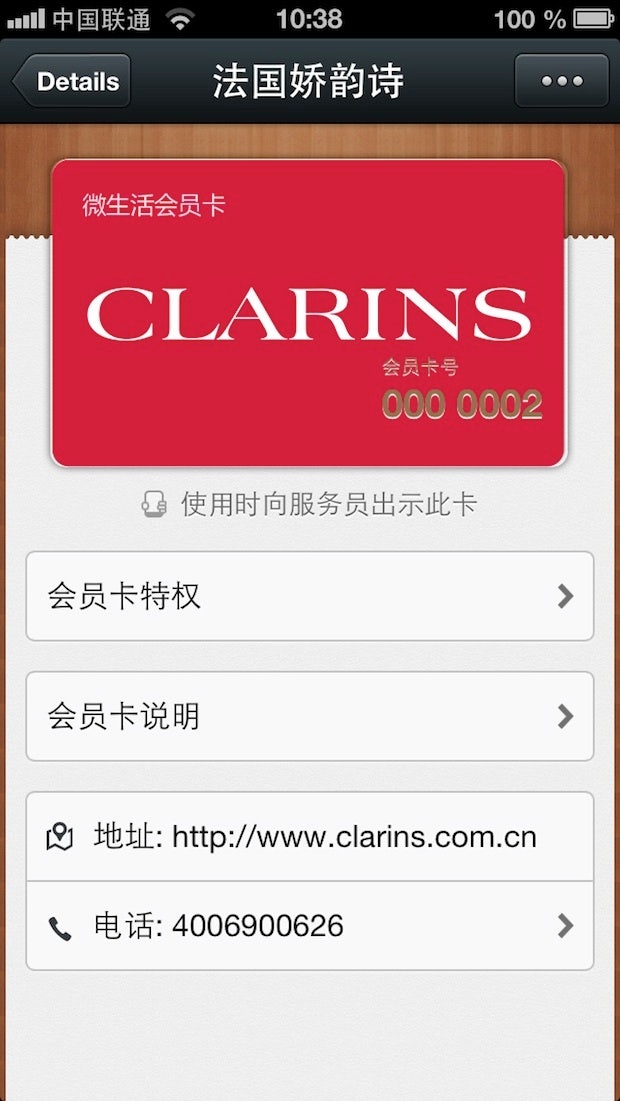"The Switch Is Being Made From Quantity To Quality Of Our Community"#

In Western countries, online traffic is moving from Web and PCs to mobile while, in Asia, consumer and tech entrepreneurs have leapfrogged directly into mobile, creating popular apps like WeChat, Line, and Kakao Talk. Luckily for brands, messaging apps offer a more private and intimate experience for users ("I'm connected with my friends"), and -- by using geo-targeting -- brands can organically raise quality sharing and conversion rates.
With the development of recent consumer trends (a boom in 3G phone adoption, online mobile consumption), premium brands are trying to adapt their online and customer relationship management (CRM) plans, yet often remain hesitant in terms of enacting effective strategies.
Follower or Member?#
By a "follower," we mean somebody who "likes" a Facebook page or becomes a "fan" of a Weibo page. Think about how many follows you have, and how many of those are active or -- even better -- are already buying from you online or in your retail stores. Traditionally, the KPI of social media agencies is based on the number of "retweets" you get per post, but this risks creating fake followers (The "Shuabang" practice). According to the last report by Sina Weibo, less than nine percent of Weibo users are "active." On the surface of it, the Sina Weibo ecosystem is 500 million users. But of these 500 million, how many are real users and not spammers?
So why not simply clear your corporate Weibo account of fake followers? For political reasons on both sides, this is highly unlikely: Brands would face an important PR issue and communications crisis. Nobody would want to erase fake or inactive followers from his or her account and drop from 200,000 to 40,000 fans in one day.
As Julien Chiavassa, APAC head of digital at
Clarins#
, put it, "As we realize that a big part of our Weibo follower base is not active, making sure that our followers are becoming as active as possible is now a much more important indicator than the total number of fans we get. The switch is being made from quantity to quality of our community, to make sure we nurture an audience that will embrace our brand’s values."

Care Less About Email Than Phone Number#
Many netizens have more than one email address. They may use QQ, Gmail or Hotmail for their personal lives and another to register on merchant websites or e-commerce sites. Commercial Email Direct Marketing (EDM) is generally sent to the second mailbox, with a low opening rate.
Gathering phone numbers, then, is key for any marketing or CRM director. Behind each phone number there is a real consumer, able to receive content directly on his or her mobile phone. Especially in China, where opening a mobile phone line is checked, direct (1:1) communication is a must-have. This puts in stark relief the shift between "follower" and "member," the turning point between online marketing and mobile marketing.

The Answer In The Asian Mobile Messaging App#
In the APAC region, messaging apps like Line, Kakao Talk, and WeChat now lead the market. Focusing on Gaming (Line), Commerce (Kakao) or Communication/Brands (WeChat), these apps analyze consumer behavior and needs on a daily basis. This form of 1-to-1 communication with a final (and real) end customer is becoming a must for brands hoping to fill the gap between Online and Offline.
As such, these new mobile marketing products are pushing classic platforms like Facebook and Weibo away from their active and valuable users. In China alone, about a half a billion 3G smartphones will be in circulation by the end of 2013. Already, smartphone users are becoming accustomed to receiving rich media content (videos, photos, music), retail store locations, and links to e-commerce sites.
"For the China market, we have decided to get in direct contact with our target audience by leveraging the WeChat platform. Connecting with these fans through their phone number is building a much more intimate relationship and allows us to provide content that will be more tailor-made and segmented. This is creating more engagement from these communities and leveraging geo-localization services to push targeted offers," says Julien Chiavassa.

Next Step : Optimize Your Marketing Expenses By Geotargeting & Customer Data Analysis#
As consumers spend less time on PCs, using smartphones for daily life, purchases, gaming and communication, brands can now use mobile marketing to create tailor-made and geolocalized campaigns, able to reach the right audience.
With a detailed list of customers, you can adapt your communication strategy and more efficiently scale your marketing expenses by talking directly to your end customer at the right moment. A consumer in ice-cold Harbin may need a winter skin cream in September while her friend in balmy Guangzhou may not need it until December. Additionally, this consumer in Guangzhou may prefer to be contacted in Cantonese rather than Mandarin. Of course, correctly leveraging each customer profile requires you to adapt your customer service tools and options, but this is something that many brands are already doing.
Now, brands face a litany of challenges: identifying Key Opinion Leaders (KOLs), advertising to a specific group of customers based on individual profile or location, and adapting marketing strategies to consumer trends.
In other words, the time is now for brands to adapt their global CRM and marketing strategies to fit the age of mobile marketing and geo-targeting.
Alexis Bonhomme is the Beijing-based general manager for Groupon-Tencent China (Groupnet), in charge of international premium brands and their digital strategies in marketing/advertising/social media/e-commerce/insights. Bonhomme works with three groups of clients: brands currently operating in China, brands planning to enter China, and brands targeting Chinese tourists.
(Opinions expressed by Jing Daily columnists do not necessarily reflect the opinions of the Jing Daily editorial team.)
